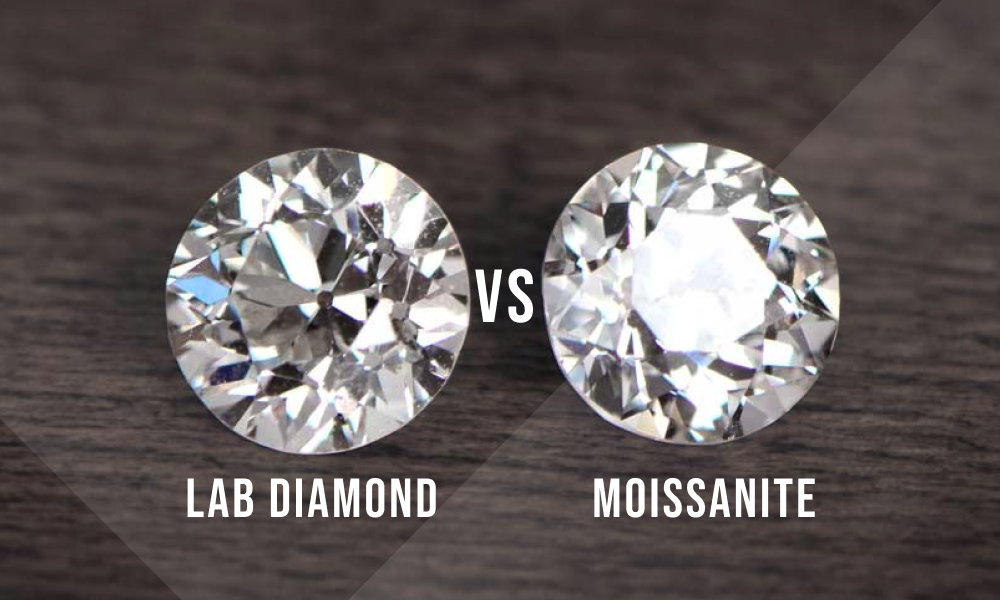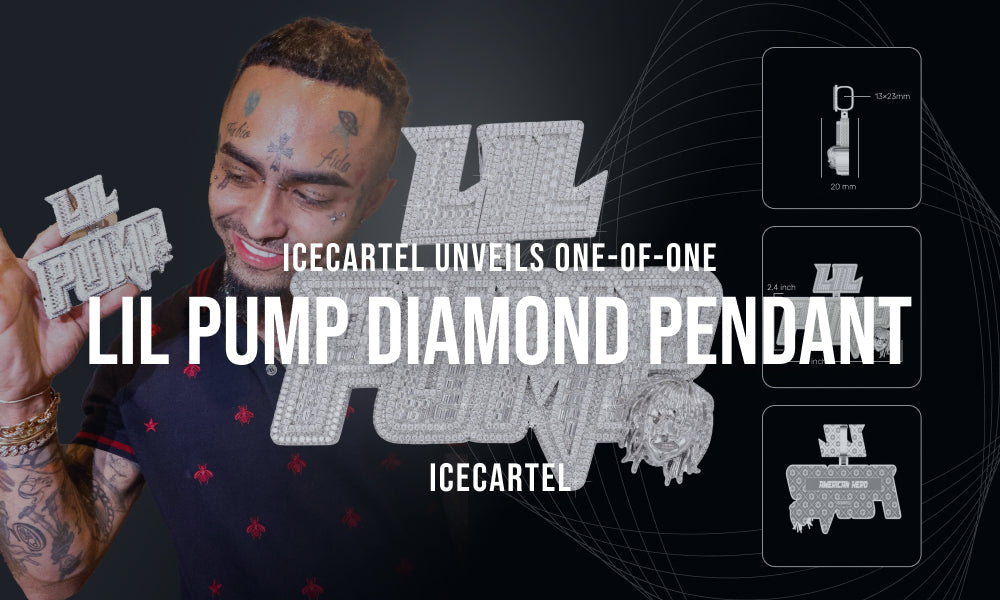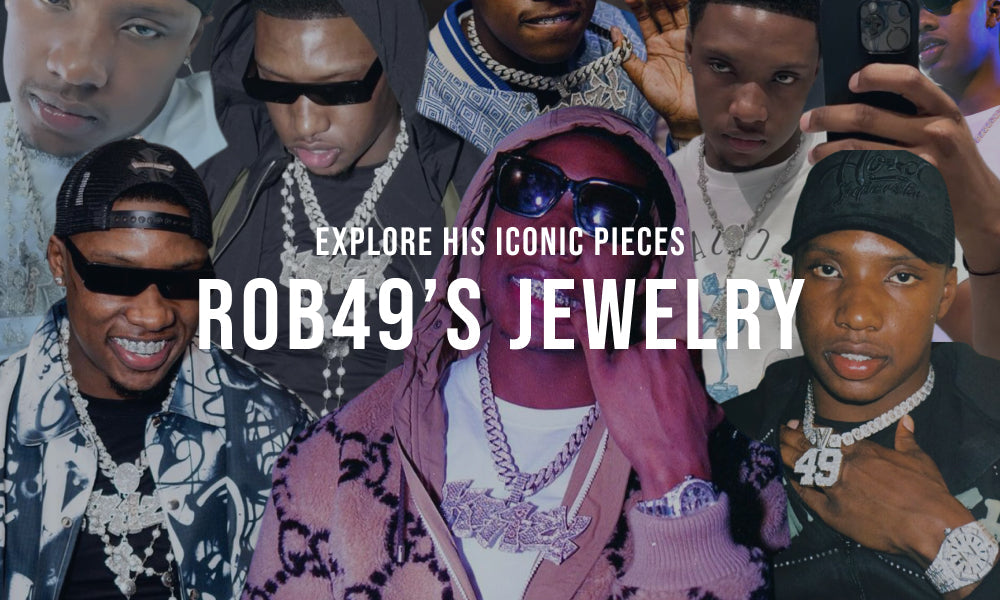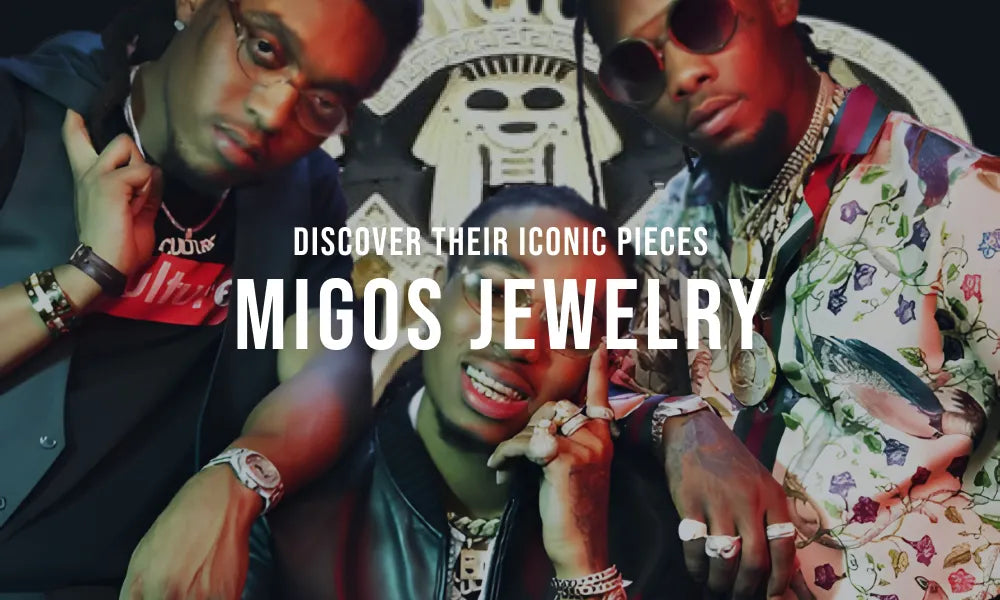Synthetic moissanite is an eco-friendly, socially conscious modern diamond alternative that is the ultimate selection for your next fine jewelry purchase. Moissanite has many positive attributes, including show-stopping fire, beauty, and hardness, making it a brilliant and high-quality gemstone choice for your engagement ring or other keepsake design. Create the engagement ring you have always dreamed of using moissanite at a fraction of the price.
Like other stones and jewelry, moissanite must be properly taken care of and regularly maintained so it will display its gorgeous appearance. Protecting your cherished design from common moissanite ring problems with our comprehensive care guide outlined within this blog post will extend the life of any piece.
What is Moissanite?
Nobel Prize-winning chemist Dr. Henri Moissan discovered natural moissanite in Arizona in 1893, hence the name moissanite. Natural moissanite is found in the upper mantle rock and meteorites and is very rare and expensive (Gem Society). Real moissanite is even rarer than diamonds!
How is Moissanite Made?

Charles & Colvard was the first company to obtain a patent and produce and sell man-made moissanite (lab-grown silicon carbide gemstones). Production for lab-grown moissanite started in the late 1990s, aimed at mimicking natural moissanite's chemical and optical properties created under a controlled environment.
Moissanite is composed of silicon carbide (SiC), with a carbon atom surrounded by four silicon atoms in a tetrahedral form. Moissanite is created with an identical structure to natural moissanite (as mentioned above) using a combination of heat and pressure. This process takes between 2-3 months to produce a gem worthy of a jewelry setting.
This made the beauty of moissanite within reach--harnessing the attributes of the real moissanite into budget-friendly price points for the population to embrace with the lab version.
10 Common Moissanite Problems You Should Be Aware Of
Learning about the top 10 issues to watch out for before purchasing your moissanite jewelry will provide helpful information; arming yourself with knowledge about moissanite will also aid in the final purchase.
1. Not as Hard as a Diamond
The Mohs Hardness scale is a scale rating materials from 1-10, determining their relative hardness/scratch resistance tendencies. The harder the stone the more durable it is, offering important insights.
Diamonds are famous for their hardness rating of 10/10, known as one of the hardest natural materials on earth. However, a diamond CAN scratch, pit, crack, break, or chip if it is treated roughly, knocked, or dropped under harsh circumstances exposing them to potential damage. Just because diamonds are hard, doesn’t mean they are indestructible. Hardness relates to the crystal structure–this doesn’t mean the material can’t break.
Moissanite rates a 9.25 on the Mohs scale, making it not as hard as a diamond. What can damage moissanite? Although moissanite can last for years, it can also scratch, chip, or break.
2. Not a Natural Gemstone
The majority of the moissanite on the market is man-made. Synthetic stones may be considered “less than” when compared to natural gems and diamonds. Since real moissanite is so rare, this means the lab-created version is a more viable option for those who enjoy these gorgeous stones and the history behind them.
But, what if you just love natural gemstones? Other diamond simulant alternatives are natural. White sapphire, white topaz, colorless beryl, and rock crystal quartz are just some of the common options that can be swapped for a diamond replacement. However, even though these gems are strikingly beautiful with their unique attributes, they do not sparkle like diamonds or moissanite. They are also not as durable.
3. Moissanite Can Appear Yellow or Other Colors

Moissanite's unique attributes cause it to display a yellow, blue, brown, or greenish hue, causing it to look unnatural or a little strange under certain lighting conditions. This body color undertone may distract from the sparkling beauty you fell in love with at first sight–displaying a recognizable tinge. Moissanite does not turn color over time, but you may start to notice it as you wear and enjoy your jewelry. Since colorless diamonds are the most sought-after, you may help but not compare them to a diamond's icy coolness.
4. Has a Different Appearance Than Diamonds
Moissanite is the man made alternative to genuine moissanite, NOT diamond. Lab-grown diamonds are the natural diamonds' synthetic counterparts. This means that moissanite doesn’t resemble a diamond and has different chemical, optical, and physical properties. At first glance, both stones may display sparkle, but they are dissimilar in many ways. Read this article to dive deeper on the subject: "Moissanite vs. Diamond: Is It Worth Choosing Moissanite Over Diamond?"
5. Has a Different Sparkle Than Diamonds
The refractive index measures the bending of a ray of light when passing from one medium into another (Britannica), or what is called fire. The higher the refractive index, the more fire the stone exhibits.
Diamond vs. moissanite:
Diamond has a refractive index of 2.417, giving it attention-drawing fire with its adamantine luster. Moissanite has a 2.65 to 2.69 with a birefringence with noticeable double refractivity. Moissanite has an adamantine to metallic luster, making it the world's most brilliant gemstone--more brilliant than diamond and other diamond simulants. Moissanite is considered the world’s most brilliant gem! Because of this, the impressive sparkle may cause the stone to reflect different colors, making it look dissimilar to a diamond.
Diamond has an isometric crystal structure.
This means carbon atoms are bonded in the same way in all directions. Diamonds crystallize in a tetrahedral system or a four-faced three-dimensional shape. Diamond is the only gem made of a single element, which is 99.95% carbon. The other 0.05 percent can include one or more trace elements which don't make up its essential chemistry. Some trace elements can influence the crystal's shape and color (GIA).
Moissanite has a hexagonal crystal habit with a 6H hexagonal (6mm), space group: P63mc crystal system classification. Moissanite is composed of silicon carbide (SiC), with a carbon atom surrounded by four silicon atoms in a tetrahedral form.
6. Can Have Visible Inclusions
Does moissanite have flaws? Did you know moissanite can also have visible inclusions, just like diamonds and many other colored stones? Moissanite is graded on the same scale as diamonds using the 4Cs developed by the Gemological Institute of America (GIA). The 4Cs include color, clarity, cut, and carat. Moissanite inclusions form during the lab process. These internal inclusions or exterior blemishes include many different internal growth characteristics such as mineral crystals, needles, clouds "plumes," feathers, knots, chips, and cavities. These inclusions allow an assigned quality value based on the clarity grade, in turn affecting the price of the stone, just like a diamond.
7. Can Be More Difficult to Sell Than Diamonds
Moissanite can be more difficult to sell than diamonds if the consumer is specifically looking for natural stones and diamonds. Synthetic stones often carry a stigma of being cheap imitations of minerals formed in the earth or sea. Educating the potential buyer and touching on the special attributes of moissanite will engage newfound interest. Socially conscious, eco-friendly, and sustainable options of natural stones are reimagined into man-made alternatives that CAN be high-quality and worthy to consider, such as moissanite.
8. Moissanite Doesn't Hold As Much Value as Diamond
Have you ever wondered about the moissanite value vs. diamond? Although moissanite rings have a resale value on the marketplace, the value of moissanite is less than a natural diamond. Moissanite is much less expensive than diamonds. Moissanite can range from $400-700 per carat, while a one-carat natural diamond can range from $1,500- $16,000 per carat, depending on the diamond's quality.
9. Diamonds are Paramount for Prestige
Diamonds are synonymous with note-worthy romantic moments, often considered investment items accompanied by insurance papers and laboratory certification papers notating their quality/authenticity. Diamond engagement rings, wedding bands, and other bespoke designs are generally considered first among consumers who want long-lasting, classic rings for their special day.
Moissanite can also be accompanied by these papers, making them a worthy purchase. However, moissanite may be overlooked by those who have their heart set on their dream diamond engagement ring. Do people really dream of having a moissanite engagement ring specifically? Moissanite is considered an alternative to a diamond for those who have done their research and desire a man-made option.
10. Moissanite - A Flash in the Pan, a Fleeting Fancy?
Is lab-grown moissanite just another trend in an attempt to sway consumers? Moissanite has been around since the 1990s but has never been as synonymous with luxury as a natural diamond, and also not as prevalent as diamonds and diamond jewelry. Lab-grown moissanite often comes with a marketing campaign with lower prices and larger carat sizes, listing all the attributes compared to a diamond. Even though it is dissimilar to diamonds, it will always be moissanite vs. diamond or even lab-grown diamond vs. moissanite and why the consumer should give moissanite a try.
FAQ

The below points summarize points of this article:
Is moissanite as durable as diamonds?
No. Diamonds rate a 10/10 on the Mohs hardness scale. Moissanite rates a 9.25, making it less durable.
Does moissanite often display a slight tinge of color?
Moissanite frequently displays a very light yellow tinge. It may also have a slight brown, blue, or green body color. This may detract from the beauty of the stone when it is viewed from different angles.
Does moissanite have inclusions?
Moissanite does contain inclusions and blemishes resulting from the laboratory formation. This may be eye visible or almost undetectable, seen from a microscope or loupe with a trained eye.
Is moissanite a good alternative to diamonds?
It can be a good alternative for those who wish to have another stone that is also sparkling and fiery. Moissanite is NOT a lab grown diamond--since it is dissimilar that means the consumer may decide whether they love the look of moissanite over diamonds and over stones.
What is moissanite made of?
Moissanite is composed of silicon carbide (SiC), with a carbon atom surrounded by four silicon atoms in a tetrahedral form. Moissanite is created with an identical structure as natural moissanite using a combination of heat and pressure over several months.
Final Verdict
Moissanite is not as hard and durable as a diamond, but they are not as hard. Moissanite is not a natural gemstone, so it may not appeal to those who only want genuine “real” stones. Moissanite often exhibits tinges of color, especially during certain lights. Moissanite does have value and resale value but is not as valuable as a diamond. Moissanites make a statement in eco-friendly luxury with friendly price points but are not as revered as natural diamonds, a classic staple for rings. Is moissanite just a fad? Time will tell which is the consumer like more, natural diamonds, lab-grown diamonds, affordable diamond simulants, or moissanite.



































































